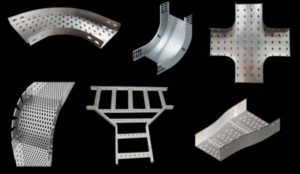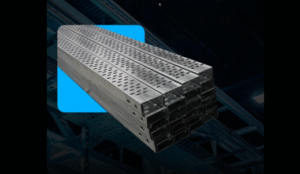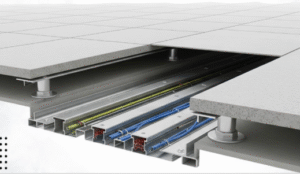In the relentless battle against corrosion, hot-dip galvanizing stands as a formidable and time-tested defense. This process, which immerses steel in molten zinc, creates a robust, metallurgically bonded coating that offers unparalleled protection against environmental degradation. At Aparna Rollform, our commitment to producing high-quality, durable roll-formed products is deeply rooted in our understanding and application of advanced corrosion prevention techniques, with hot-dip galvanizing being a cornerstone of our manufacturing excellence.
This comprehensive article delves into the transformative power of hot-dip galvanizing, exploring its intricate process, the long-term benefits it confers, and its critical role in extending the lifespan and enhancing the integrity of steel structures across various industries. We aim to highlight why hot-dip galvanizing is not just a protective layer but a strategic investment in the longevity and reliability of metal assets, aligning perfectly with Aparna Rollform’s dedication to engineering superior and enduring solutions.
Understanding the Hot-Dip Galvanizing Process: A Journey of Transformation
Hot-dip galvanizing is a meticulously controlled process that ensures a uniform and durable zinc coating on steel. The effectiveness of this corrosion protection method lies in the metallurgical bond formed between the zinc and the steel, creating a series of alloy layers that are harder than the base steel itself. The process typically involves several key stages:
1. Preparation: The Foundation of a Perfect Bond
The initial and most crucial step in hot-dip galvanizing is the thorough preparation of the steel surface. This ensures optimal adhesion of the zinc coating and involves
- Degreasing: Removal of organic contaminants like oil, grease, and dirt using alkaline solutions.
- Pickling: Immersion in an acidic solution (e.g., hydrochloric acid) to remove rust and mill scale, leaving a chemically clean surface.
- Fluxing: Application of a flux solution (typically zinc ammonium chloride) that cleans the steel further, prevents oxidation, and prepares the surface for the metallurgical reaction with the molten zinc.
2. Galvanizing: The Molten Embrace
Following preparation, the steel is immersed in a bath of molten zinc, maintained at a temperature of approximately 450°C (842°F). At this elevated temperature, the zinc reacts with the iron in the steel to form a series of distinct zinc-iron alloy layers. These layers are integral to the steel surface, providing exceptional adhesion and abrasion resistance. A final layer of pure zinc solidifies on top as the steel is withdrawn from the bath.
3. Cooling and Inspection: Ensuring Quality and Performance
After removal from the molten zinc, the galvanized steel is cooled, either by quenching in water or by air. This solidifies the zinc coating. The final stage involves a thorough inspection to verify the coating thickness, uniformity, and overall quality, ensuring that the product meets stringent industry standards and specifications.
The Enduring Advantages of Hot-Dip Galvanizing
Hot-dip galvanizing offers a multitude of long-term benefits that make it a preferred choice for corrosion prevention in various applications:
1. Unrivaled Corrosion Resistance: A Multi-Layered Defense
The zinc coating provides a dual layer of protection. Firstly, it acts as a physical barrier, isolating the steel from corrosive elements in the environment. Secondly, if the coating is scratched or damaged, the surrounding zinc sacrificially corrodes, protecting the exposed steel through cathodic protection. This self-healing property ensures that minor damages do not compromise the integrity of the entire structure.
2. Exceptional Durability and Longevity: Decades of Performance
One of the most significant advantages of hot-dip galvanizing is the extended lifespan it imparts to steel structures. Galvanized steel can withstand harsh weather conditions, industrial pollutants, and abrasive environments for many decades, often exceeding 50 years, with minimal maintenance. This longevity translates into significant cost savings over the product’s lifecycle.
3. Comprehensive Protection: Every Surface Covered
The immersion process ensures that all surfaces of the steel, including internal sections, edges, and complex shapes, receive a uniform and complete coating. This comprehensive coverage is difficult to achieve with other coating methods and is crucial for protecting hard-to-reach areas from corrosion.
4. Superior Abrasion Resistance: Tougher Than Steel
The zinc-iron alloy layers formed during hot-dip galvanizing are harder than the base steel itself. This provides exceptional resistance to mechanical damage such as scratches, impacts, and abrasions during handling, transportation, installation, and throughout the service life of the structure.
5. Cost-Effectiveness: A Smart Long-Term Investment
While there is an initial investment in hot-dip galvanizing, its long-term cost-effectiveness is undeniable. The extended lifespan, reduced maintenance requirements, and elimination of frequent recoating needs result in substantial savings over the product’s operational period, making it a highly economical choice for durable infrastructure.
6. Environmental Sustainability: A Responsible Choice
Zinc is a natural and recyclable material, making hot-dip galvanizing an environmentally responsible choice. The process itself has a relatively low environmental impact, and the extended lifespan of galvanized steel reduces the demand for new steel production, contributing to resource conservation.
Hot-Dip Galvanizing at Aparna Rollform: A Commitment to Excellence
At Aparna Rollform, we understand that the integrity of our roll-formed products is paramount. That’s why we prioritize the use of high-quality hot-dip galvanizing processes for our steel components, including cable trays, earthing strips, and other structural elements. Our dedication to precision engineering ensures that every product benefits from the superior corrosion protection and enhanced durability that hot-dip galvanizing provides.
Our state-of-the-art facilities and stringent quality control measures guarantee that our galvanized products meet and exceed international standards. We are committed to delivering solutions that not only perform exceptionally but also contribute to the long-term reliability and safety of your projects.
Conclusion: Building a Resilient Future with Galvanized Steel
Hot-dip galvanizing is more than just a protective coating; it is a fundamental process that transforms ordinary steel into a highly resilient and durable material, capable of withstanding the harshest environments. Its long-term benefits in corrosion prevention, extended lifespan, and cost-effectiveness make it an indispensable choice for modern infrastructure. By choosing hot-dip galvanized products from Aparna Rollform, you are investing in a future where durability, reliability, and sustainability are built into every component.
We invite you to explore our range of hot-dip galvanized roll-formed products and discover how Aparna Rollform can contribute to the success and longevity of your next project. Partner with us for solutions that are engineered to endure.




